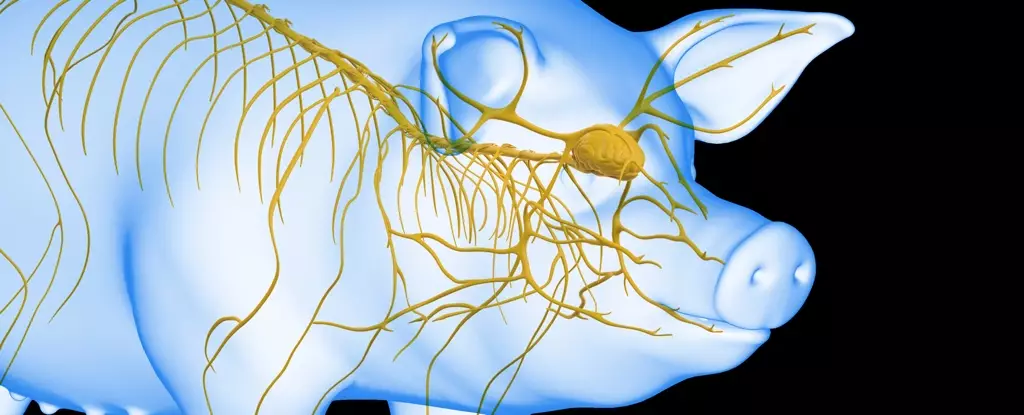Sudden cardiac arrest remains one of the leading causes of death worldwide, characterized by the abrupt loss of heart function, which halts blood flow to vital organs. This cessation of circulation triggers a biological chain reaction, particularly harmful to the brain, where oxygen deprivation leads to serious damage within minutes—a condition known as ischemia. The evidence is clear: the prompt restoration of blood flow is crucial; every second counts, making it imperative that researchers seek innovative solutions to extend the viability of brain function post-arrest.
Recent studies led by a team of scientists from Sun Yat-Sen University in China have ventured into unprecedented territory by investigating a novel approach to reviving brain activity during cardiac arrest. Their focus centers on the liver, an organ often overlooked in discussions surrounding brain recovery. The researchers conducted carefully controlled experiments using 17 Tibetan minipigs, observing the effects of both brain and liver ischemia. The findings from these experiments open doors to a deeper understanding of how organ interactions can influence recovery post-cardiac arrest.
The experimental design was meticulous: two groups of pigs experienced brain ischemia for 30 minutes, while one group simultaneously underwent liver ischemia, and a control group received no ischemia at all. Upon euthanizing the pigs and evaluating their brain tissue, the results were significant. While the control group exhibited minimal brain damage, the group that did not suffer liver ischemia demonstrated notably better preservation of brain integrity than those subjected to concurrent liver ischemia.
Innovative Lifesaving Techniques for Brain Recovery
Building on the promising animal model findings, researchers next explored the potential of integrating an undamaged liver into a life support system designed to revive an anoxic brain. This radical approach entailed a technology known as liver-assisted brain normothermic machine perfusion, where an artificial support system mimicking heart-lung function was enriched with a healthy liver. This concept, though not directly translatable to human treatment, offers invaluable insights into the timing and methods that maximize resuscitation success.
The initiation of this advanced life support system revealed fascinating dynamics of brain activity. When pigs’ brains were reconnected to the support system shortly after the loss of blood flow—first at the 10-minute mark—it confirmed that initiating support soon after ischemia leads to noticeable brain electrical activity. As the experimental timeline progressed, researchers experimented with longer delays, finding that reconnecting the liver-assisted system at intervals of up to 50 minutes allowed the brain to exhibit sustained electrical activity for six hours post-resuscitation.
In a remarkable twist, even in cases where the brain had undergone oxygen deprivation for as long as 60 minutes, researchers still recorded a recovery period of three hours before activity began to wane. These critical thresholds highlight the liver’s essential contribution to maintaining cerebral function beyond the typical survival window.
The implications of this research are profound. By demonstrating that the functionality of the liver can substantially alter brain recovery outcomes, the findings pave the way for further investigation into multi-organ resuscitation strategies. The study not only elevates our understanding of cardiac arrest but also lays the groundwork for innovative research into how harmonizing organ functionality could improve survival rates and overall recovery for patients suffering from traumatic medical emergencies.
This groundbreaking work invites a reconsideration of established protocols around cardiac arrest treatment. It urges medical professionals to examine the interplay between various organs during resuscitation efforts, particularly how organs like the liver can be leveraged to facilitate better patient outcomes. Future investigations could explore translational potential for human applications, extending the search for solutions that go beyond conventional methods and seeking to redefine the standards of care in emergency medicine.
As researchers continue to peel back the layers surrounding cardiac arrest recovery, the insights revealed through this focused study underscore the potential for innovation in medical science. By pursuing uncharted territories in organ interaction and recovery dynamics, the advancements made in this field could ultimately lead to transformative changes in how we manage cardiac emergencies. With a deeper understanding of the role the liver plays in brain health post-arrest, the possibilities for saving lives are vast, promising hope for patients and families alike in the face of life-threatening events.


Leave a Reply